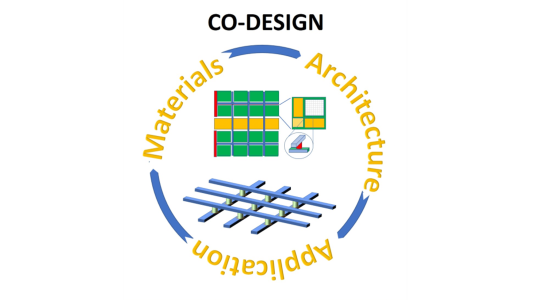
Scientific Achievement
A rigorous systems-to-materials co-design study that determines key material property targets for efficient compute-in-memory.
Significance and Impact
Provides one of the first detailed co-design guided methodology and benchmarks for new non-volatile memory (NVM) materials for cross-bar array based neuromorphic computing.
Research Details
- Explored a co-design view of the compute in-memory process; and determined the hardware solutions for cross-bar arrays taking into account read/write challenges, and energy/speed efficiency.
- We then explored the materials properties and physical mechanisms required for analog & digital memory in these implementations.
- We evaluated current NVM candidates based on performance needs such as temporal stability, low variability, low switching energy, high integration density, and scalability.
- We then laid out the set of metrics that a viable NVM candidate will need to meet keeping in mind the end-to-end co-design need.
Argonne National Laboratory seeks solutions to pressing national problems in science and technology. The nation’s first national laboratory, Argonne conducts leading-edge basic and applied scientific research in virtually every scientific discipline. Argonne researchers work closely with researchers from hundreds of companies, universities, and federal, state and municipal agencies to help them solve their specific problems, advance America’s scientific leadership and prepare the nation for a better future. With employees from more than 60 nations, Argonne is managed by UChicago Argonne, LLC for the U.S. Department of Energy’s Office of Science.
The U.S. Department of Energy’s Office of Science is the single largest supporter of basic research in the physical sciences in the United States and is working to address some of the most pressing challenges of our time. For more information, visit https://energy.gov/science.